LAST TRAIN: The day our rail service fell silent
WHEN the last train left Lismore on Sunday, May 15, 2004, it was a sombre day for the region.
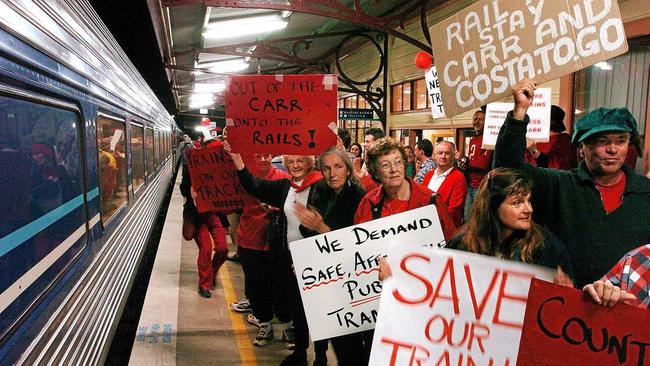
Lismore
Don't miss out on the headlines from Lismore. Followed categories will be added to My News.
JUST before midnight, 13 years ago today, a crowd of about 200 people turned up at Lismore railway station to witness the departure of the last ever train to run on the Casino to Murwillumbah line.
The sombre occasion saw a mock coffin produced by protesters mourning the loss of the train service, while others took more direct action by laying across the railway sleepers.
This was the bitter end of a long-running campaign to stop the Bob Carr Labor government ending train services on the line permanently.
Placards were waved with the words "Rail to stay, Carr and Costa to go" and "Save our train".
The train line was a vital public service which connected people living inland at Casino, Lismore and Murwillumbah with the coast.
But during the long reign of the New South Wales Labor government, it was increasingly seen as a liability.
Rosebank resident Lydia Kindred, who rode the last train to Sydney, said the service had already been ruined by the government's timetable changes imposed years before 2004.
"Back in the late 80s ... it was so popular that 1600 people would use it every week," she said.
"It cost $11 million to run but they took in $22.5 million every year."
Ms Kindred said when the legendary "surf train" to Byron Bay - which left Lismore in the morning and returned in the afternoon - was axed, as well as the so-called "motor rail" service to Sydney which allowed people to put their cars on the train, it was the beginning of the end.
"It went down to only 400 people using every week, and it just got progressively worse and worse," she said.
After the trains ended, Ms Kindred joined a long-running campaign to restore the service led by community action groups Trains on Our Tracks and Northern Rivers Railway Action Group.
"We were totally convinced that when you had a good timetable that worked in with when people needed to go to work and school, that people would use it," she said.
Even today, people were still "angry and upset" over the closure of the line, Ms Kindred said.
Various petitions launched since the closure have generated more than 17,000 signatures in favour of restoring the trains.
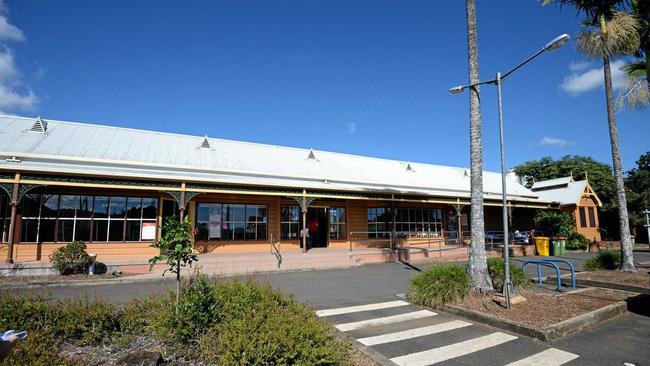
Hopes dashed
The campaign to bring back trains was originally supported by the NSW Opposition, which promised to restore the service while in opposition throughout the mid to late 2000s.
But by 2011, when the Coalition led by Barry O'Farrell finally won office in a landslide victory, their only promise was to fund a feasibility study on the idea.
Delivered in 2013, the report found it would cost a crushing $900 million to restore the rail line to modern standards, to allow frequent and quick train services.
The report counted 187 bridges on the line, the majority of which were timber and required either a complete overhaul or replacement.
It found even if the money was spent "the line would still not serve the major growth corridor between Lismore, Ballina, Byron Bay and the Tweed (Heads) district, and would not help people directly access health, education and social services".
It was a bitter pill to swallow for those people who believed the train could be restored for much less, and the findings have been contested ever since.
Ms Kindred labelled the costing "ridiculous", saying half of the money was for "contingencies".
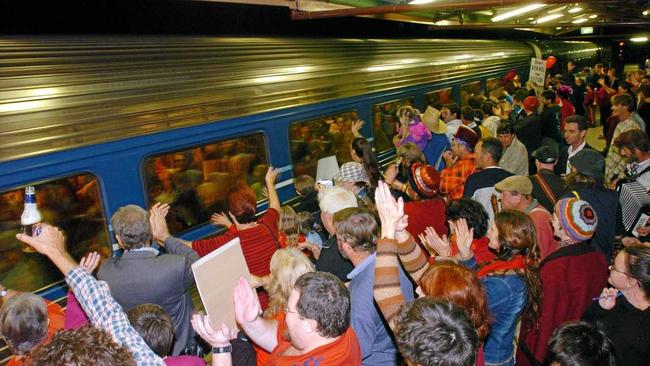
Alternative vision
But the State Government also offered hope to an alternative vision of transforming the rail corridor into a publicly-owned trail which would use the Northern Rivers' natural scenery and historical villages to attract more tourists to the region.
An initial report costed the rail trail at $75 million, and had a positive cost-benefit ratio based on the number of tourist dollars predicted.
The trail would have twin benefits - local people could use it for their own exercise and leisure, while thousands of tourists would access it each year, boosting the economy.
Former Ballina MP Don Page hailed the rail trail idea as "potentially the best in Australia", thanks to the region's climate and its established tourism industry.
It's this vision which has gained steady support in recent years. Governments have backed the plan as a more cost-effective use of the line, with funding on offer via Federal and State infrastructure grant programs.
Northern Rivers Rail Trail Association secretary Geoff Meers said people would be "amazed" at the success of the trail once it was finished, estimating at least 50,000 tourists would use it each year.
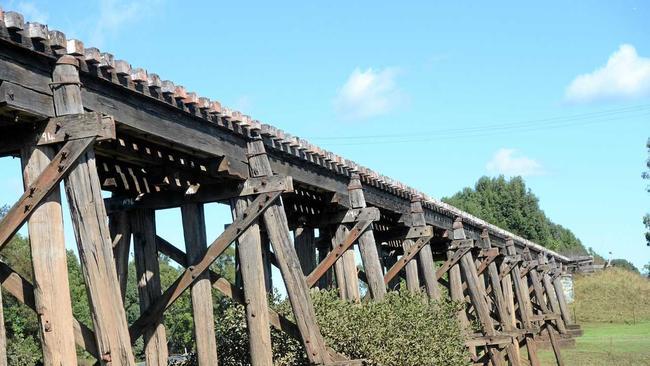
Never giving up
But a defiant Ms Kindred said she still believed a "unique" Northern Rivers train service was more accessible and convenient for the whole population.
She said it would be a "travesty" if a rail trail was put down on the corridor and has vowed to continue to fight for a train service on the line, "on behalf of all the people of the Northern Rivers and beyond who love this place".
So, what does the future hold?
Whatever the future of the rail corridor, the consensus is it needs to be put to use.
At the last council election, Byron Shire mayor Simon Richardson won support for his "Byron Line" vision for a commuter rail service alongside a bike trail.
Byron Shire Council has put aside $200,000 to provide a comprehensive engineering study on the Bangalow to Billinudgel section, plus an economic and social feasibility study estimating local and tourist patronage.

In the Tweed, Richmond Valley and Lismore local government areas, the councils are backing the rail trail-only proposal.
Tweed Shire lodged applications in February with both the Federal and State governments for $13 million - $6.5 million each - to fund a 24km rail trail from Murwillumbah to Crabbes Creek.
On the other end of the line, Lismore and Richmond Valley councils are planning to lodge a funding application under the State Government's $300 million regional growth tourism and environment fund.
Each council has planned to set aside $50,000 towards a feasibility study to underpin the application.
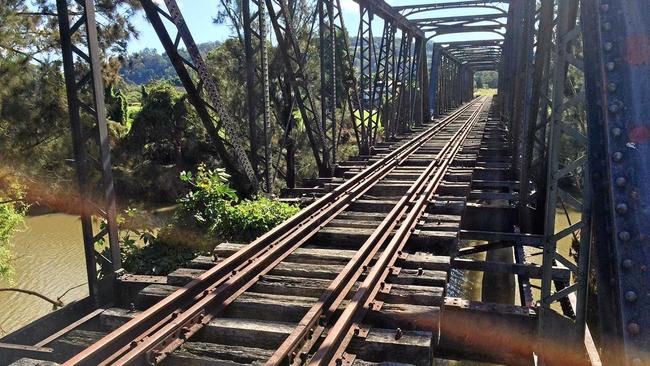
Richmond Valley mayor Robert Mustow said his council was in "full support" of the rail trail vision.
"It's sitting there now, deteriorating. The State Government has said it'll never return trains to it, and so we'd like to see a rail trail," he said.
"I've recently visited the Otago rail trail in New Zealand, and there was 600 people riding the trail in one day. I was very impressed.
"I can see it would be great for our tourism industry on the whole North Coast and generate a lot of dollars into the community."
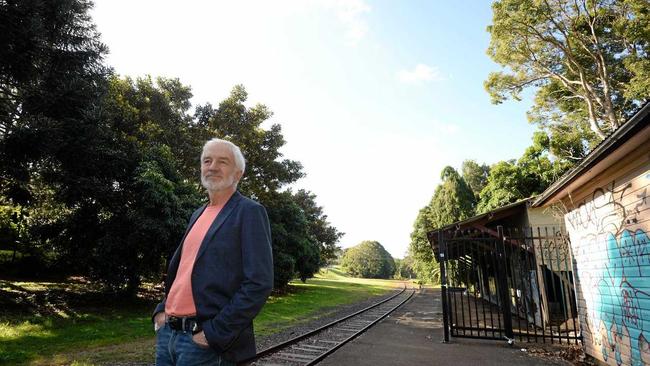
In State Parliament last week, Lismore MP Thomas George backed the vision for the rail trail along the entire corridor.
"I believe that this trail should eventually extend to Mullumbimby, regardless of what Byron Shire thinks of rail trails," he told the parliament.
"The success of this proposal would be enhanced if there was a major town at each end of the line."
Ballina Greens MP Tamara Smith has also backed a rail trail in her electorate, saying it's time to move on from the "trains versus trail" debate.
"We will not go back to the bad old days of pitting rail trails against public transport," she said.
Page MP Kevin Hogan hailed the trail as a "great job creating idea", which would bring an entirely new kind of tourist.


